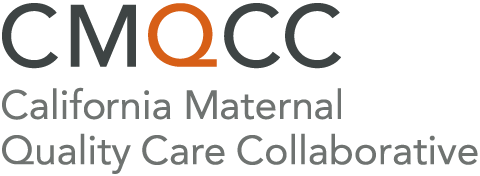A Strategy To Improve Outcomes
The Community Birth Partnership Initiative is a program of the California Maternal Quality Care Collaborative (CMQCC), funded by the Skyline Foundation, to improve the transfer of care between the home or freestanding birth center and the hospital, when the patient’s condition requires transfer. Community and hospital responsibility for safe, efficient transfer of care to the hospital when needed is a key part of midwifery access, integration, and sustainability. The initiative is built upon critical concepts and strategies in the newly published update to the Toolkit to Support Vaginal Birth and Reduce Primary Cesareans and is grounded in birth equity, shared decision making, and respectful care.
Background: Two Unprecedented Crises
It is common knowledge now that the United States carries the distinction of having the worst maternal mortality rate of all economically advanced countries. Additionally, a recent report released by the California Department of Public Health, using an enhanced surveillance methodology, showed that Black birthing and pregnant people have a pregnancy-related mortality risk that is four to six times greater than white people in California.
On top of this, California is dealing with a significant dilemma in maternity care access. In 2014, the American College of Obstetricians and Gynecologists (ACOG) observed that at least nine counties have no ob/gyn provider, and many more lack the necessary providers to meet the need. A recent investigation by CalMatters revealed that at least 46 California hospital maternity units have closed since 2012.
Community Midwifery Care Is An Essential Resource For Those Who Need It Most
National and international organizations, supported by a deep shelf of research and a clarion call from community leaders, report that highly skilled and highly personalized midwifery care is a crucial strategy for curbing the trend of maternal mortality and morbidity, and a strategy to address the access problem. Until recently, access to midwifery care – specifically community birth (e.g., home birth and birth in freestanding birth centers) – was not credited as an essential approach to improving perinatal care in America. But times are changing.
California has never attempted a statewide program to improve relationships between community midwives and hospital providers, nor has there been any large-scale effort to improve processes for transferring patients between community birth sites (the home or freestanding birth center) and the hospital.
We want to change that. Every person deserves the safest and most respectful birth possible, regardless of where they intend to give birth. There is so much we can solve if we work together.
Where We Are Working
Currently, we are focusing on two pilot groups/regions. We will take the learnings from this first pilot project to inform expanded work across the state. Hospitals from the greater Sacramento area and the Inland Empire (San Bernardino and Riverside Counties) will be working together with community midwives from their same areas.
Goals Of The Initiative
- Improve relationships and dialogue between hospital and community birth providers;
- Enhance whole-person safety through the co-design of policies for hospital transfer by community birth midwives and hospital providers;
- Improve teamwork and communication between community birth midwives, EMS, and the hospital team to ensure respectful, patient-centered, dignified transfer of care for every patient;
- Improve understanding of community birth and reduce stigma around home birth and birth in birth centers;
- Improve the patient experience of transfer; and
- Partner with community organizations to expand stakeholder understanding of community birth, find opportunities for joint initiatives that meet our collective goals around community birth, and engage patients in telling their stories about community birth.
Components Of The Initiative
- Virtual learning sessions and virtual small group sharing sessions between community midwives and hospital staff;
- Collaborative work sessions between community midwives and hospital staff to co-design policies for transfer;
- Virtual and in-person simulations of transfer to practice and improve processes; and
- Surveys of patient experiences of transfer in order to integrate patient-focused and community-specific change.

